-

Both India and the United States are stable democracies. From America’s standpoint, post-World War II, a new democratic regime in India was counted upon as a strategic ally for containing Soviet influence in Asia. Yet, India refused to be an ally of the US. Strongly allied with Britain through both World Wars, the United States had a policy of ambivalence towards colonial India. F.D.Roosevelt and Truman paid scant attention to the cause of Indian independence and did not press hard Churchill or Atlee, the British Premiers during World War II to give independence to India.
-
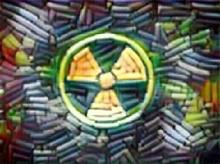
The newly unveiled U.S. Nuclear Posture Review focuses on five key objectives; one of them is preventing nuclear proliferation and nuclear terrorism. The report underscores nuclear terrorism as ‘today’s most immediate and extreme danger.”
What is Nuclear Terrorism and how serious is the threat? Is it an overrated nightmare? Some facts here:
-
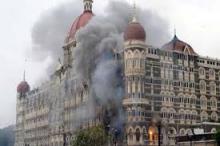
Mohammed Ajmal Amir Kasab, the lone surviving terrorist in the November 2008 Mumbai attacks has been sentenced to death by the court yesterday, May 6. Kasab was found guilty earlier this week and convicted for mindless murder and waging war against the country.
The most surprising aspect of the trial was the acquittal of the other two accused, Fahim Ansari and Sabauddin Ahmed for lack of evidence. Both of them are Indian nationals and accused of having surveyed Mumbai and drawn maps of the targets at the behest of Pakistan based Lashkar-e-Taiba.
-
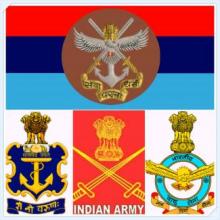
The new Defence Procurement Procedure (DPP) was officially released by the defence minister on January 13, 2011. This bulky document—281 pages long and revised eight times in the last nine years—comes into effect on January 1, 2011.
The defence minister, in a press release on the same day, stated that the intent of DPP-2011 was to expand the Indian defence industrial base, encourage indigenous defence production, and reduce defence imports. It is to be noted that he unveiled India’s first defence production policy on January 14, which emphasised the same objectives.
-
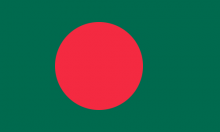
Very often, western observers play down the existence and influence of Pakistan-based Lashkar-e-Taiba and Harkat-ul-Jihad Islami inside Bangladesh’s territory. Investigations into several terror strikes in Bangladesh that occurred between May 2004 and December 2005 have revealed, instead unearthed, a lethal nexus between these two Pakistan-based terror groups and a couple of mainstream political parties (Pro-Islamic Bangladesh Nationalist Party (BNP) and the Jamaat-e-Islami (JeI) in Bangladesh.
-
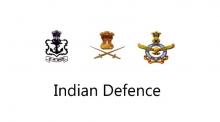
Yet again, India’s defence budget has escaped larger national attention this year. The defence component of the national budget accounts for 14% of central government expenditure but gets less than 5% of media space, the bulk of which goes towards data released by the government with sporadic analyses by experts. Virtually no discussion on the issue takes place in Parliament either. A call for increased resources for national defence usually only goes out when defence spending by Pakistan and China makes headlines.
-

Most of the military power states in the world aspire to become a nuclear power, especially in this highly competitive world. The most recent participant in the race to become a nuclear state is Myanmar. A report in the `Sydney Morning Herald' in early August quotes two Myanmarese defectors as saying that the Myanmar junta was secretly building a nuclear reactor and plutonium extraction facility with North Korea's help and with the aim of acquiring its first nuclear bomb in five years.
-
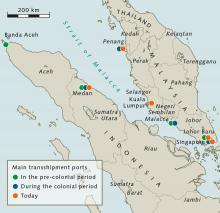
India’s External Affairs Minister, Mr Natwar Singh, while attending the ASEAN - plus 3 meetings and the ASEAN Regional Forum (ARF) in Jakarta in July 2004, had noted that India was ready to provide security in the Malacca Straits and stressed that it was in India's national interest to ensure that the Strait remained a crime-free sea-lane.
-
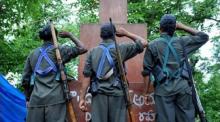
The dwindling Communist Party of India-Maoist (CPI-Maoist) Karnataka State Committee may get a fresh issue to revive and consolidate after Arcelor Mittal and POSCO’s interest for investments in that State. Land acquisition, displacement and minority issues may dominate their agenda. Recent Industrialization programme in the state could be a major issue for the Maoists to seek public support. The Karantaka State government has decided to acquire one lakh acres of land in June 2009 in and around all the second tier cities excluding around 2,000 acres adjoining Bangalore.
-

Three names have been doing the rounds in India these days: Maulana Ilyas Kashmiri, David Coleman Headley (a.k.a Dauod Geelani) and Tahawur Hussein Rana; one hardcore veteran Jehadi and two motivated ‘would be’ terrorists. They are in the news for plotting major assaults in India. Among them, Ilyas Kashmiri who was rumored to be dead early this year, in fact, survived three drone attacks in Pakistan’s Waziristan region, belongs to the Al Qaeda- Harkat-Ul- Jihad- Al-Islami (HuJI) lineage and heads Al Qaeda’s deadly 311 brigade. He still carries head money of US $ 600,000 dollars.
Paxton ported to drupal by DropThemes.in